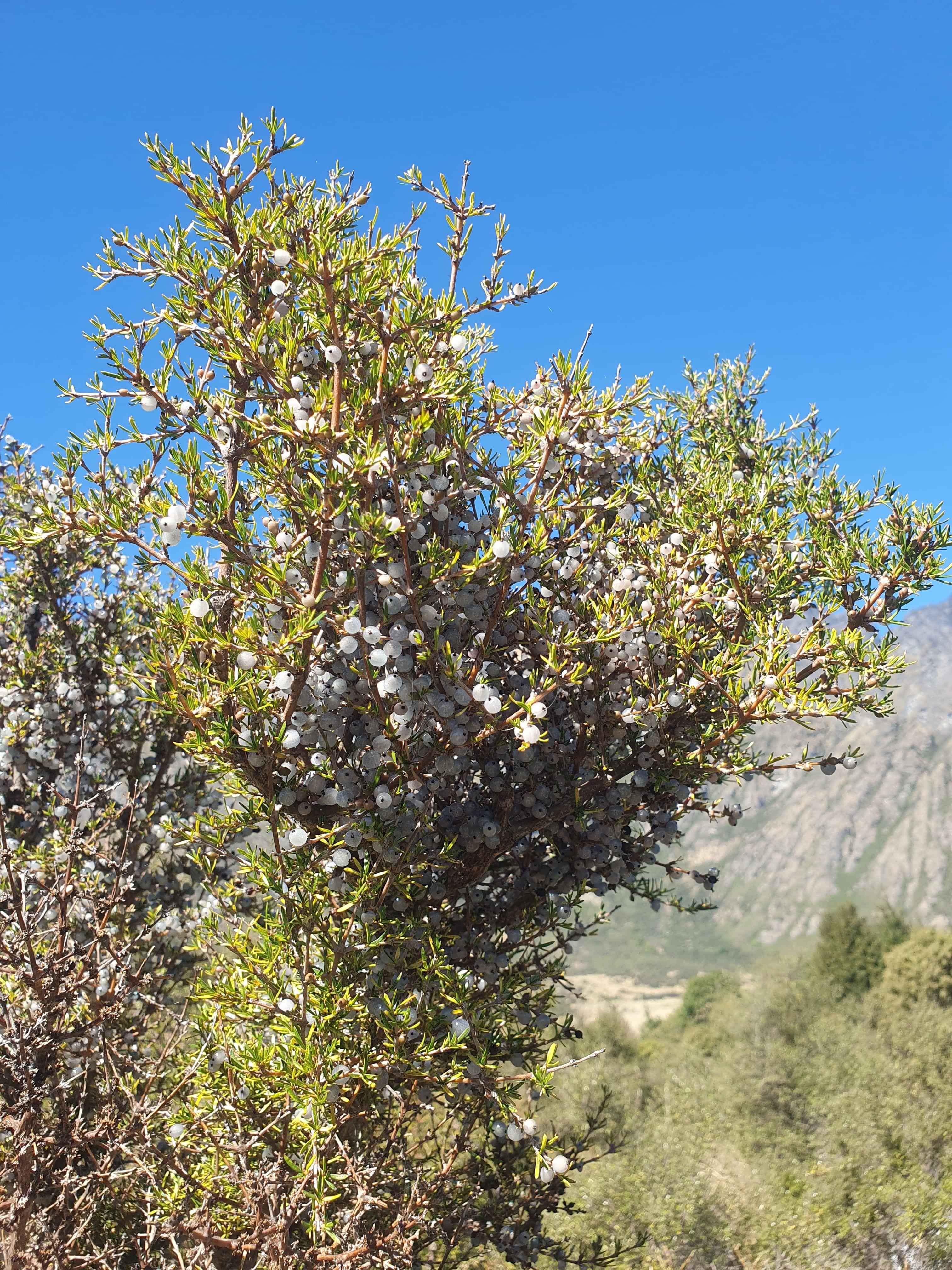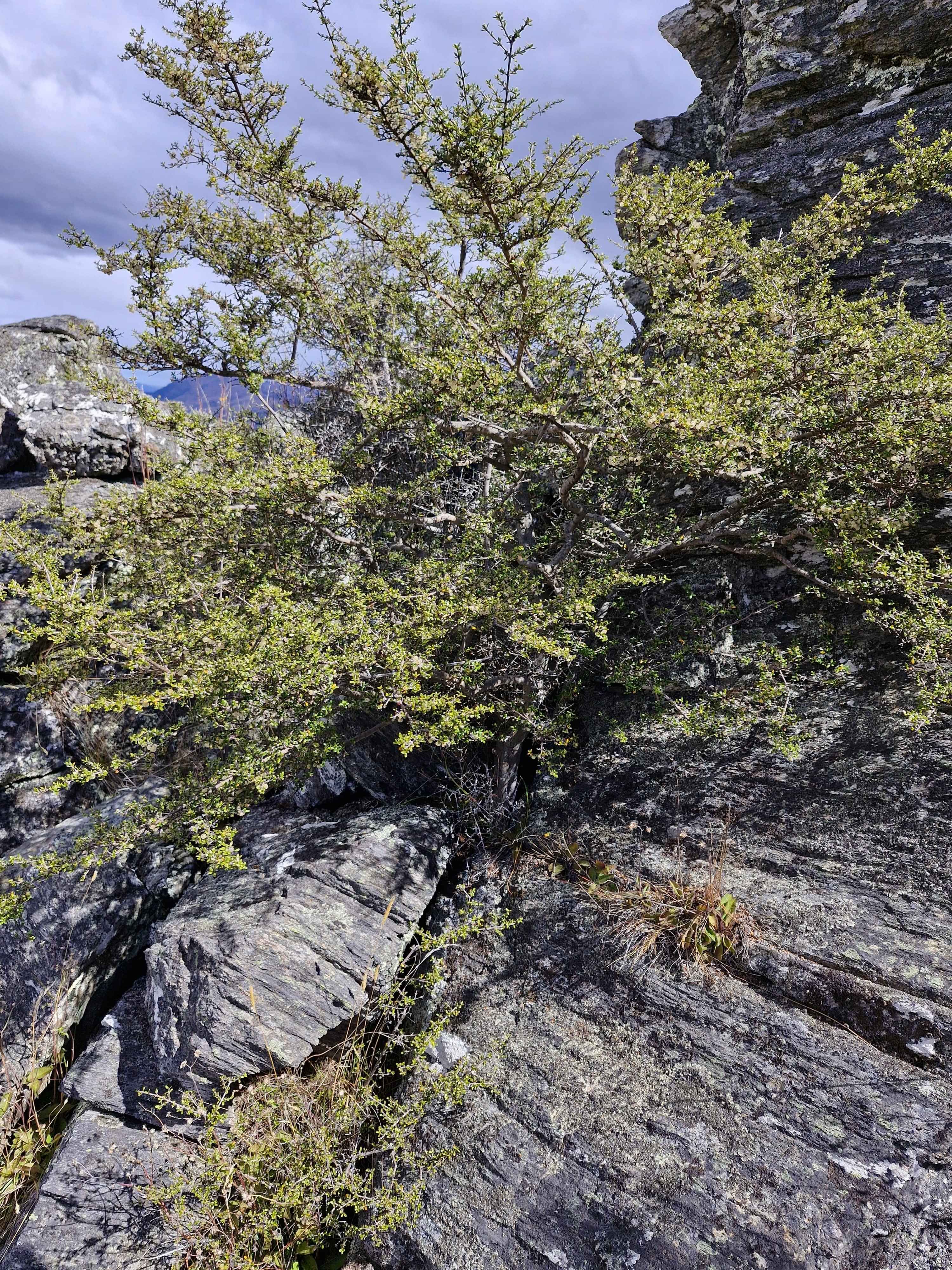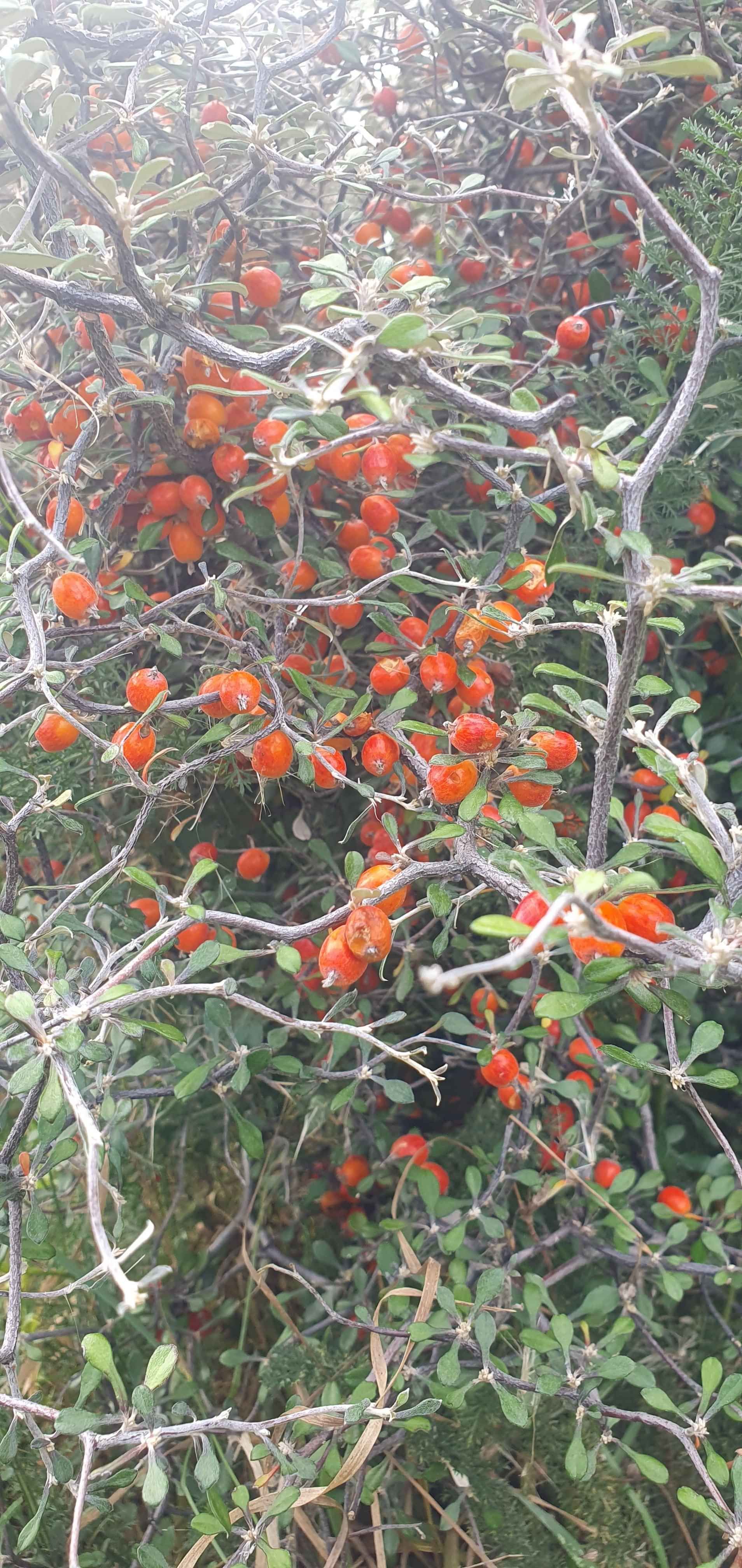Autumn berries - creating a platter for birds
Days are beginning with a crisp chill in the air, dew is a regular occurrence and the day ends in warmth. Autumn continues with echoes of summer lingering on. Summer flowers fade, but they are replaced by a plethora of different shapes, sizes and colours of fruit. This fruit provides a veritable larder for birds and lizards going into winter.
Many native shrubs have small or even indistinguishable flowers and understandably get passed up for plants with large flowers attractive to humans. However these shrubs that could be described as unexciting are transformed in autumn into beaded jewels. Coprosma propinqua is ubiquitous in the high country shrubland and usually doesn’t get a second glance but in autumn they are laden in shiny drops of blues, whites or yellows. Cordyline australis are adorned with glistening pendants. Corokia cotoneaster, usually reserved and blending into the schist, flames to attention with bright red, orange or yellow fruit.

When considering animals that eat fruit in New Zealand birds are the first that spring to mind. Lizards, however, are also frugivores and important seed dispersers -especially in arid ecosystems. One study found at least 8% of a southern grass skink’s diet was made up of Coprosma propinqua berries and lizards accounted for 45 - 95% of predation on the fruit (Wotton et al, 2016). Most lizards, like skinks, are much more visible scuttling on the ground in stony tussock country so it is understandable to be oblivious to lizards in the bushes. Lizards with the ability to climb like the Kawarau Gecko, Woodworthia “Cromwell”, are nocturnal, making them less observable to us diurnal humans. Shrubs with berries that feed skinks often have their berries on the inside of the twiggy branches where skinks can dine with protection. Plants that cater to lizards are rewarded by having their seed deposited in protected rock crevices which collect moisture - prime real estate in dry eco systems.

It is thought that berry colour plays a large part in attracting the favoured disperser (Lord & Marshall, 2001). Colours like reds, yellows, oranges, blacks and purples are said to attract more birds whereas blues and whites attract lizards. Melicytus alpinus, Muehlenbeckia axillaris, Coprosma acerosa or Coprosma brunnera with their white or blue fruit will be perfect for feeding lizards. Fuchsia excorticata, Melicytus ramiflorus, Podocarpus hallii, Pseudopanax colensoi and Coprosma lucida are just some that could be included in planting for birds.
It is important to plant a diverse range of fruiting plants as fruit will ripen at different times through the season. Having a variety will create a continuous food source. While the purpose of a bird's diet in summer might be to reproduce, in autumn it is to survive the lean winter. In autumn and winter the proportion of fruit in a native bird's diet increases, becoming a main food source. Whilst most berries are produced in March and April many plants produce berries at different times throughout autumn and winter. Birds have been found to have preferences for different berries. Some berries like those of Corokia cotoneaster won’t be touched until all other berries have been consumed. These late berries will provide a vital food source for the hardest time of the year.
